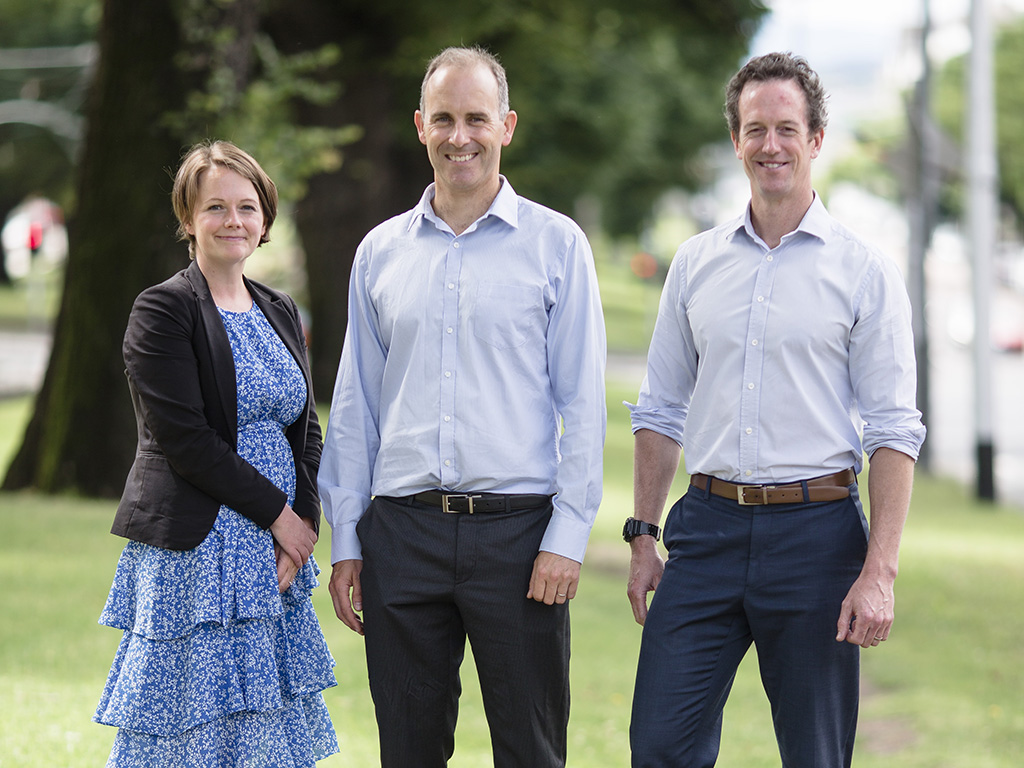This website uses cookies so that we can provide you with the best user experience possible. Cookie information is stored in your browser and performs functions such as recognising you when you return to our website and helping our team to understand which sections of the website you find most interesting and useful.
News
A shared vision
A new joint research strategy aims to maximise the benefits of having a world-class hospital and medical research institute under the same roof.
CERA and the Royal Victorian Eye and Ear Hospital have forged a new research strategy, which will strengthen collaboration and bring the benefits of research to clinical care.
The four-year strategy Innovation for Exceptional Care outlines a joint vision of integrating research across all clinical specialties and roles throughout the hospital.
“The strategic location of three world-leading organisations – the Eye and Ear, CERA and the University of Melbourne – in the one location creates an unparalleled opportunity for innovation in eye care research,” says CERA Managing Director Professor Keith Martin.
“It fosters the kind of translational research that CERA is committed to with laboratory-based discovery scientists working side by side with clinician-researchers to make a difference for people living with vision loss.”
It also aims to apply the latest research innovations to improve care and efficiencies across the hospital and build on the success of existing collaborations. This includes the partnership between CERA’s retinal gene therapy researchers and the hospital’s Ocular Genetics Clinic.
Dr Jonathan Ruddle leads the Ocular Genetics Clinic, which includes ophthalmologists, geneticists and genetic counsellors who support patients and families living with genetic eye disease.
Having such close ties between the two organisations improves outcomes.

Maximising opportunities
CERA’s Head of Retinal Gene Therapy Research Dr Tom Edwards says cooperation between the Ocular Genetics Clinic and CERA maximises opportunities for patients, clinicians and researchers.
Dr Edwards, along with Associate Professor Lauren Ayton, is also one of the leads of the VENTURE Study – a collaboration between CERA and the University of Melbourne that is a registry and natural history study of people living with inherited retinal diseases (IRD).
“Patients who are referred to the Ocular Genetics Clinic will often also be referred to the VENTURE study if they express an interest in getting involved in research,” says Dr Edwards.
Likewise, people who come into the VENTURE study may be referred to the Ocular Genetics Clinic.
“Patients lacked a single point of access for a genetic diagnosis, genetic counselling and research opportunities like our ongoing natural history study,” says Dr Edwards.
With new potential treatments for IRDs on the horizon, having access to current and future research opportunities is comforting for patients.
“Their reactions have all been very positive, and we all feel like we’re having a good impact,” says Dr Edwards.
“We’ve been very lucky to have ophthalmology fellow and CERA colleagues Dr Doron Hickey, orthoptist and new clinic coordinator Lisa Kearns and Associate Professor Fred Chen from the Lions Eye Institute in Perth join Alex Hewitt, Jon Ruddle and myself in the clinic,” says Dr Edwards.
“And while it is primarily a service for Victorians, interstate collaborations really position it as a genetic service for all comers.”
Dr Edwards says working so closely together creates many opportunities.
“Many people in the clinic wear both a hospital hat and a CERA hat, which really helps collaboration.”
This article first appeared in See the future: Annual Review 2022.

